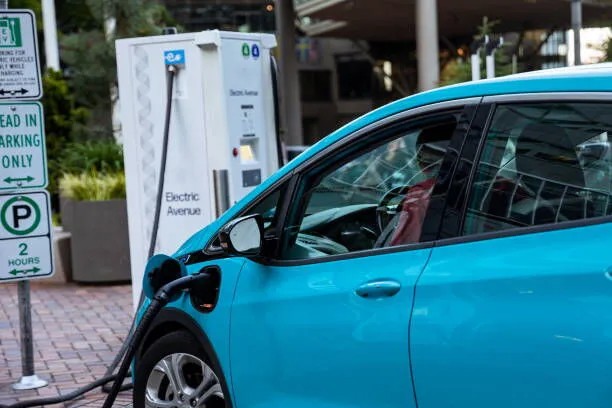Understanding EV Charging Curves: Why They Matter for Efficiency and Battery Health
As one of professional EV charger manufacturers in China, Topper Company provides dependable electric vehicle charging equipment and comprehensive charging solutions.
Electric vehicles (EVs) are transforming the automotive landscape by offering a cleaner, more sustainable alternative to traditional gas-powered cars. But to fully benefit from EV ownership, it's crucial to understand how EV charging works—especially the concept of charging curves. These curves are more than just technical data; they are key to efficient charging and preserving your battery’s lifespan.
What Are EV Charging Curves?
EV charging curves illustrate how charging power (measured in kilowatts, or kW) varies with the battery’s state of charge (SoC), usually represented as a percentage. Picture a graph where the vertical axis shows charging power and the horizontal axis shows SoC. The resulting line typically looks like a mountain: starting high, leveling off, then tapering down as the battery nears full capacity.
This curve reflects how your EV interacts with the charger. When the battery is low, it can accept high power. As it charges up, the power rate decreases to protect the battery from overcharging and overheating. This behavior isn’t random—it's engineered for safety, efficiency, and battery longevity.
Why Charging Curves Matter
The shape of the charging curve plays a critical role in how your EV performs over time. Since the battery is the most expensive and essential part of an EV, keeping it healthy is key to maintaining performance, range, and resale value.
When charging, lithium ions move between the battery’s electrodes. If this happens too quickly—especially at higher states of charge—it can cause overheating and stress on the battery cells, accelerating degradation. To mitigate this, EVs use sophisticated battery management systems (BMS) to control the charging rate dynamically.
For example, even if you plug into a 150 kW fast charger, your vehicle may initially only draw 40–50 kW. This isn’t a flaw—it’s the BMS optimizing charging conditions to avoid long-term damage.
Key Factors That Shape Charging Curves
Several factors influence the behavior and shape of a charging curve:
1. Battery Chemistry
Different battery types (e.g., lithium-ion, LFP, NCM) have unique voltage and temperature tolerances, which directly impact how fast they can be safely charged.
2. Charging Station Power
While a high-power DC fast charger can deliver up to 350 kW, the actual charging rate depends on what the vehicle can handle. Slower Level 2 AC chargers result in flatter, more consistent curves that are easier on the battery.
3. Ambient Temperature
Temperature affects battery performance. Cold conditions slow down the chemical reactions inside the battery, leading to reduced charging rates. Heat, on the other hand, may trigger protective throttling to avoid overheating.
4. State of Charge (SoC)
Charging is fastest when the battery is nearly empty. As SoC increases, the rate drops significantly—especially after 80%—to protect the cells from overvoltage stress.
The Role of Battery Management Systems (BMS)
The BMS is the brain behind safe and efficient charging. It constantly monitors temperature, cell voltage, and internal resistance, adjusting the charging current in real time. If it detects any abnormalities—such as overheating or imbalanced cells—it can reduce or even stop charging to prevent damage.
Thanks to BMS technology, EVs today can safely utilize fast-charging networks while minimizing wear and tear on the battery.
How to Optimize Your EV Charging Experience
Knowing how charging curves work can help you extend your battery’s life and improve your day-to-day experience. Here are some practical tips:
- Choose the Right Charger
- Use DC fast chargers only when needed—like on long trips. For daily charging, Level 2 AC chargers are more battery-friendly.
- Limit Frequent Fast Charging
- High-power charging can increase heat and stress. Regular use may lead to faster battery degradation.
- Charge Within Optimal Temperature Ranges
- In cold weather, preheat your battery before charging. In hot climates, try to charge during cooler parts of the day or park in shaded areas.
- Avoid Charging to 100% Frequently
- Stopping at around 80–90% is healthier for the battery unless you need the extra range.
- Trust the BMS
- Don’t worry if your car doesn’t draw full power immediately—it’s optimizing for longevity and safety.
Final Thoughts
EV charging curves are essential to understanding how your vehicle charges and how to protect your battery over time. These curves reflect a carefully engineered balance between speed, safety, and battery preservation—managed by the vehicle’s battery management system.
As EV technology continues to advance, we can expect even smarter charging strategies and improved battery chemistries. But for now, being mindful of how and when you charge—guided by an understanding of charging curves—will help you get the most out of your electric vehicle.
Whether you're new to EVs or a long-time owner, embracing this knowledge is a big step toward smarter, more sustainable driving. Learn more about Google SEO.





Comments